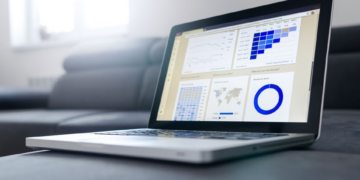Smart Productivity Apps 2025 explores the current landscape and future advancements in productivity apps, delving into the role of AI, user experience trends, advanced features, cross-platform integration, and collaboration tools.
The current landscape of productivity apps is diverse and expansive, offering users a wide range of tools to enhance their efficiency and organization. From task management apps to note-taking tools, calendar applications, and collaborative platforms, productivity apps have become an essential part of both personal and professional life.
As we look ahead to 2025, the evolution of productivity apps is expected to continue at a rapid pace. With advancements in technology, including artificial intelligence (AI) and automation, productivity apps are becoming more intelligent and intuitive. These apps are now able to learn user preferences, automate repetitive tasks, and provide personalized recommendations to help individuals streamline their workflow and maximize their productivity.
Role of AI and Automation
Artificial intelligence and automation are playing a crucial role in shaping the future of productivity apps. AI-powered features such as smart suggestions, predictive analytics, and natural language processing are revolutionizing how users interact with productivity tools.
- AI-driven Personalization: AI algorithms can analyze user behavior and preferences to offer personalized recommendations for tasks, priorities, and scheduling.
- Automated Workflows: Automation tools can streamline repetitive tasks, such as data entry, scheduling meetings, and sending reminders, allowing users to focus on more strategic work.
- Enhanced Collaboration: AI-powered features enable real-time collaboration, facilitate communication among team members, and ensure seamless project management.
- Data Insights: AI algorithms can analyze large datasets to provide valuable insights and trends that help users make informed decisions and optimize their workflow.
User Experience Trends

User experience in productivity apps is expected to undergo significant changes by 2025, driven by advancements in technology and a focus on enhancing efficiency and user satisfaction. The integration of voice commands and gestures, as well as the utilization of augmented reality (AR) and virtual reality (VR), will play crucial roles in shaping the future of user interactions with productivity apps.
Integration of Voice Commands and Gestures
The integration of voice commands and gestures in productivity apps will revolutionize how users interact with their devices. By 2025, users can expect to navigate through apps, create tasks, set reminders, and send messages using voice commands, eliminating the need for manual input. Similarly, gestures such as swiping, pinching, and tapping will enable users to perform actions more intuitively and quickly, enhancing overall productivity and user experience.
Impact of Augmented Reality (AR) and Virtual Reality (VR)
Augmented reality (AR) and virtual reality (VR) technologies are poised to transform the way users engage with productivity apps. By overlaying digital information onto the physical environment, AR can provide users with contextual information, real-time data visualization, and interactive elements to streamline tasks and boost productivity. On the other hand, VR can create immersive environments where users can collaborate with team members, attend virtual meetings, and manipulate 3D models, offering a more engaging and productive work experience. With these technologies, users can expect a more interactive, efficient, and personalized user experience in productivity apps by 2025.
Advanced Features and Functionalities
Predictive analytics and machine learning are set to revolutionize productivity apps in 2025, offering users enhanced capabilities to optimize their workflows and make data-driven decisions. Customization options will play a crucial role in catering to individual user preferences and work styles, providing a more personalized experience. Additionally, the integration of robust cybersecurity measures will ensure that sensitive data is protected from cyber threats, safeguarding user privacy and maintaining the integrity of the app.
Upcoming Advanced Features
- Predictive Analytics: By analyzing patterns and historical data, productivity apps will be able to anticipate user needs, suggest actions, and automate repetitive tasks, ultimately boosting efficiency and productivity.
- Machine Learning: With machine learning algorithms, productivity apps can learn from user interactions and behaviors to offer tailored recommendations, automate complex processes, and continuously improve performance over time.
Importance of Customization Options
- Personalization: Customization options allow users to tailor the app interface, settings, and features according to their preferences, enhancing user experience and overall satisfaction.
- Flexibility: By providing a range of customization choices, productivity apps can accommodate diverse work styles and individual needs, empowering users to work more efficiently and effectively.
Cybersecurity Measures Integration
- Data Encryption: Implementing strong encryption protocols will safeguard user data from unauthorized access and ensure confidentiality, maintaining the trust of users in the app’s security.
- Multi-factor Authentication: By requiring multiple layers of verification, productivity apps can prevent unauthorized logins and protect user accounts from being compromised by cyber attackers.
- Regular Security Updates: Continuous monitoring and updates to security protocols will help mitigate emerging threats and vulnerabilities, keeping productivity apps resilient against evolving cyber risks.
Cross-Platform Integration
Cross-platform integration in productivity apps is a growing trend aimed at providing users with a seamless experience across different devices and operating systems. By allowing users to access and synchronize their data and workflows regardless of the device they are using, these apps enhance productivity and efficiency in today’s digital world.
Adaptation to Various Devices and Operating Systems
One of the key aspects of cross-platform integration is the ability of productivity apps to adapt to various devices and operating systems. This adaptation involves optimizing the user interface and functionality to ensure a consistent experience regardless of whether the user is using a smartphone, tablet, laptop, or desktop computer. By leveraging responsive design principles and adaptive layouts, these apps can provide a uniform user experience across different screen sizes and resolutions.
- Adapting to different screen sizes and resolutions: Productivity apps need to adjust their layout and design elements to fit the screen size and resolution of the device being used. This ensures that users can easily interact with the app and access all its features without any usability issues.
- Optimizing performance for different devices: Another challenge in cross-platform integration is ensuring that the app performs well on various devices with different hardware specifications. By optimizing resource utilization and performance metrics, developers can ensure a smooth user experience across all platforms.
- Ensuring data synchronization and compatibility: Cross-platform integration also involves ensuring that data is synchronized seamlessly across different devices and operating systems. This requires robust backend infrastructure and data management protocols to maintain data integrity and consistency.
Challenges and Benefits
Cross-platform integration in productivity apps comes with its own set of challenges and benefits. Understanding these can help developers and users alike make informed decisions about the adoption and use of such apps.
- Challenges:
- Compatibility issues: Ensuring compatibility with different devices and operating systems can be a complex task, requiring extensive testing and development efforts.
- Security concerns: Synchronizing data across multiple platforms raises security concerns related to data privacy and protection.
- User experience consistency: Maintaining a consistent user experience across platforms can be challenging due to differences in design guidelines and interaction patterns.
- Benefits:
- Increased accessibility: Cross-platform integration allows users to access their data and workflows from any device, enhancing accessibility and flexibility.
- Improved collaboration: By enabling seamless sharing and synchronization of data, productivity apps promote collaboration among team members working on different devices.
- Enhanced productivity: A unified user experience across platforms can boost productivity by eliminating workflow interruptions and ensuring continuity in tasks.
Collaboration and Communication Tools
Collaboration and communication tools play a crucial role in enhancing productivity and efficiency in the workplace. In 2025, productivity apps are expected to integrate advanced features to facilitate seamless collaboration and communication among team members, especially in remote work settings.
Integration of Communication Features
In 2025, productivity apps will go beyond basic messaging functionalities and incorporate advanced communication features such as video conferencing. This integration will enable team members to have virtual meetings, brainstorm sessions, and discussions in real-time, regardless of their physical location. With the rise of remote work trends, the ability to connect face-to-face through video conferencing within productivity apps will enhance team collaboration and foster a sense of unity among remote team members.
Facilitating Remote Work and Team Collaboration
Productivity apps in 2025 will focus on enhancing remote work capabilities by providing tools that streamline communication and collaboration. Features like shared project boards, real-time document editing, and task assignment functionalities will enable team members to work together efficiently, even when they are not physically present in the same location.










